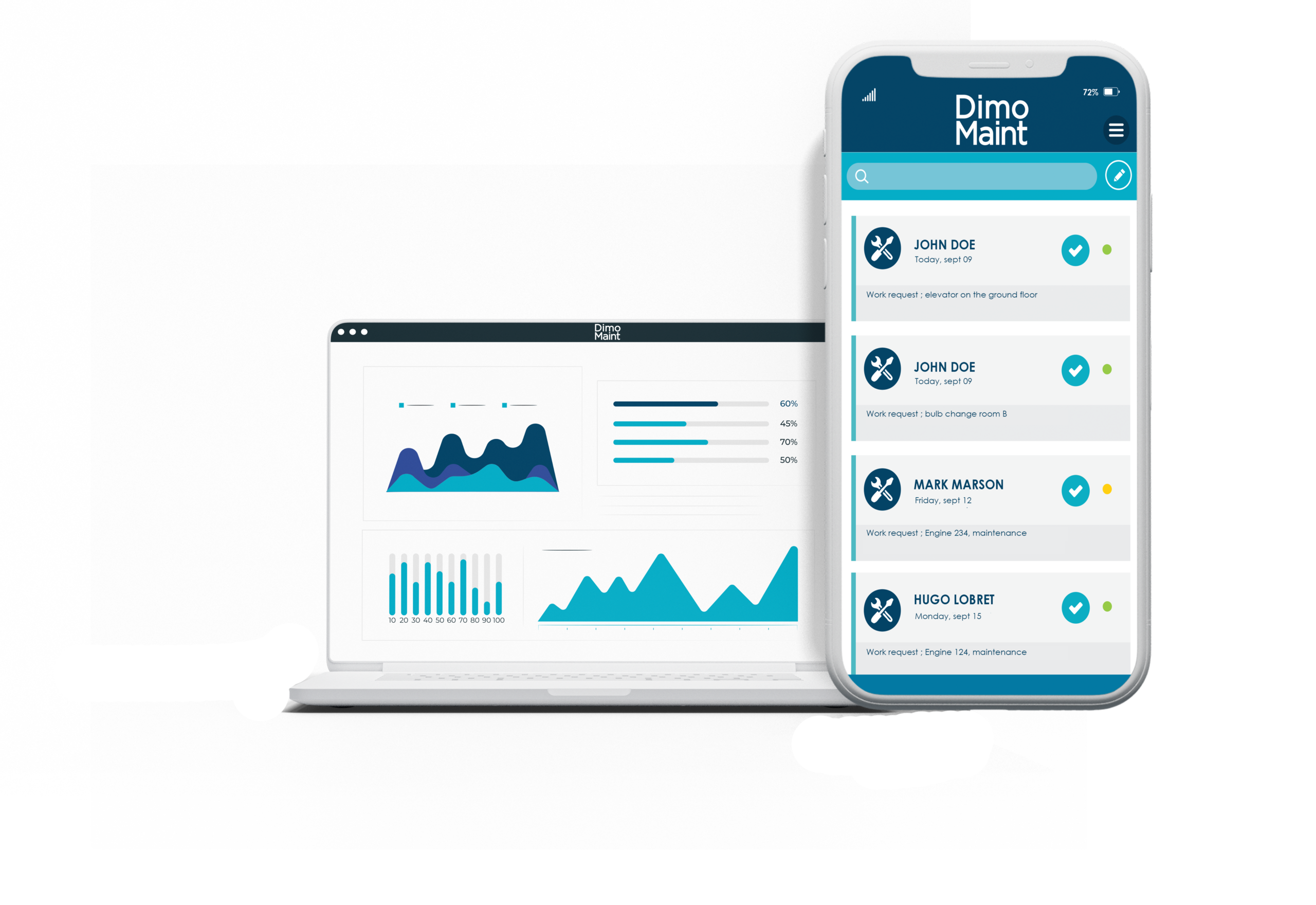Founded in 1981, L’Incroyable, a home decor and improvement retail chain with 36 stores across northern and western France, is part of the family-owned Wilmot-Rucar company. Its headquarters are located in Denain (59), home to a 24,000 m2 logistics warehouse stocked with tens of thousands of product references.
The maintenance department, consisting of just two people, is responsible for handling all maintenance requests from stores, including regulatory and corrective maintenance as well as building upkeep. Given the scope of the task, the company opted for an advanced CMMS (Computerized Maintenance Management System) solution—DimoMaint—to digitize its processes and simplify maintenance operations.
Digital transformation as the project’s Cornerstone

The maintenance team includes Thomas Addis, Head of Real Estate, supported by an assistant who dedicates 75% of her time to managing the CMMS. Their operational responsibilities are extensive.
The goal was to digitize as many processes as possible, including invoicing and contract management, while inventory management remained outside their scope. Currently, all maintenance work is outsourced, with service providers supplying both materials and labor. Mr. Addis also oversees new construction and renovation projects, ensuring smooth execution.
Optimizing maintenance through CMMS implementation
The decision to implement a CMMS stemmed from the need to replace an overload of Excel spreadsheets, which lacked flexibility in data consolidation. The new system aimed to improve maintenance tracking across all sites and meet five key objectives:
-
Optimized tracking of regulatory maintenance
-
Improved prioritization of tasks
-
A comprehensive view of maintenance activities across individual and multiple sites
-
Smart archiving to prevent data loss
-
Digitization of processes
Why DimoMaint? flexibility matters
The initial research for a CMMS solution began in September 2017. The maintenance team conducted an online benchmark of available systems, initially without specific technical requirements. Feedback from different vendors helped refine the project scope. While budget constraints were considered, the primary selection criteria focused on ease of use for non-technical users.
Store managers handle various tasks and are not specialized in facility management. As such, they needed a user-friendly, modern, and evolving solution—DimoMaint, developed in 2016, fit the bill perfectly. Its intuitive interface made it easy to adopt, ensuring a smooth transition to digital maintenance requests.
Deployment in just six months
The CMMS was implemented in June 2018. Mr. Addis personally oversaw the migration of data from Excel, with the most challenging part being the creation of a logical and intelligent hierarchical structure for each store.
He explains: “We had to register every piece of equipment per store to establish a unique hierarchy based on each site’s layout. This process took about six months, including data integration into the CMMS. Some key figures: 250 equipment entries per store and over 1,000 entries for the headquarters and logistics warehouse.”
The maintenance team ensures that store managers minimize errors and omissions. “There is still some resistance, depending on the user type. Some still rely on emails or phone calls. Generational differences also play a role, but CMMS usage is becoming standard. Now, personalized interfaces allow store managers to submit a maintenance request in under five minutes,” says Mr. Addis.
A smoother maintenance workflow
Regulatory preventive maintenance (contracts) is now scheduled within the CMMS. Requests are approved based on priority and allocated budgets. Once approved, work orders are issued to service providers via the CMMS or through a quote validation process. The store manager verifies compliance with the order, ensures work completion, and provides feedback.
Through the CMMS, managers can submit required documents for service providers—typically one provider per activity type (e.g., heating, air conditioning, electrical work). This includes safety registers, risk prevention plans, and work orders. The maintenance team processes all submitted documents, and the work order is closed only once the service provider has issued an invoice.
Mr. Addis explains: “We structured this process during the system integration phase. The tool provides a comprehensive view of all maintenance activities per store, allowing us to plan interventions more effectively. Contracts were also revised to accommodate specific time constraints.”
Significant time savings and efficiency gains
According to Mr. Addis: “The CMMS saves time by instantly providing all necessary information for maintenance requests, eliminating excessive email and phone exchanges. It also prevents oversight of scheduled interventions—about 1,200 regulatory checks over six months—and ensures timely follow-ups.”
He also notes improvements in service provider invoicing, a reduction in premature equipment failures, and quick access to past maintenance records.
Looking ahead: financial management optimization
In the future, Mr. Addis plans to integrate part of the inventory into the CMMS to gain a holistic view of maintenance costs and optimize financial planning. He also expresses interest in Building Information Modeling (BIM), considering a potential integration with the CMMS to enhance data connectivity.


